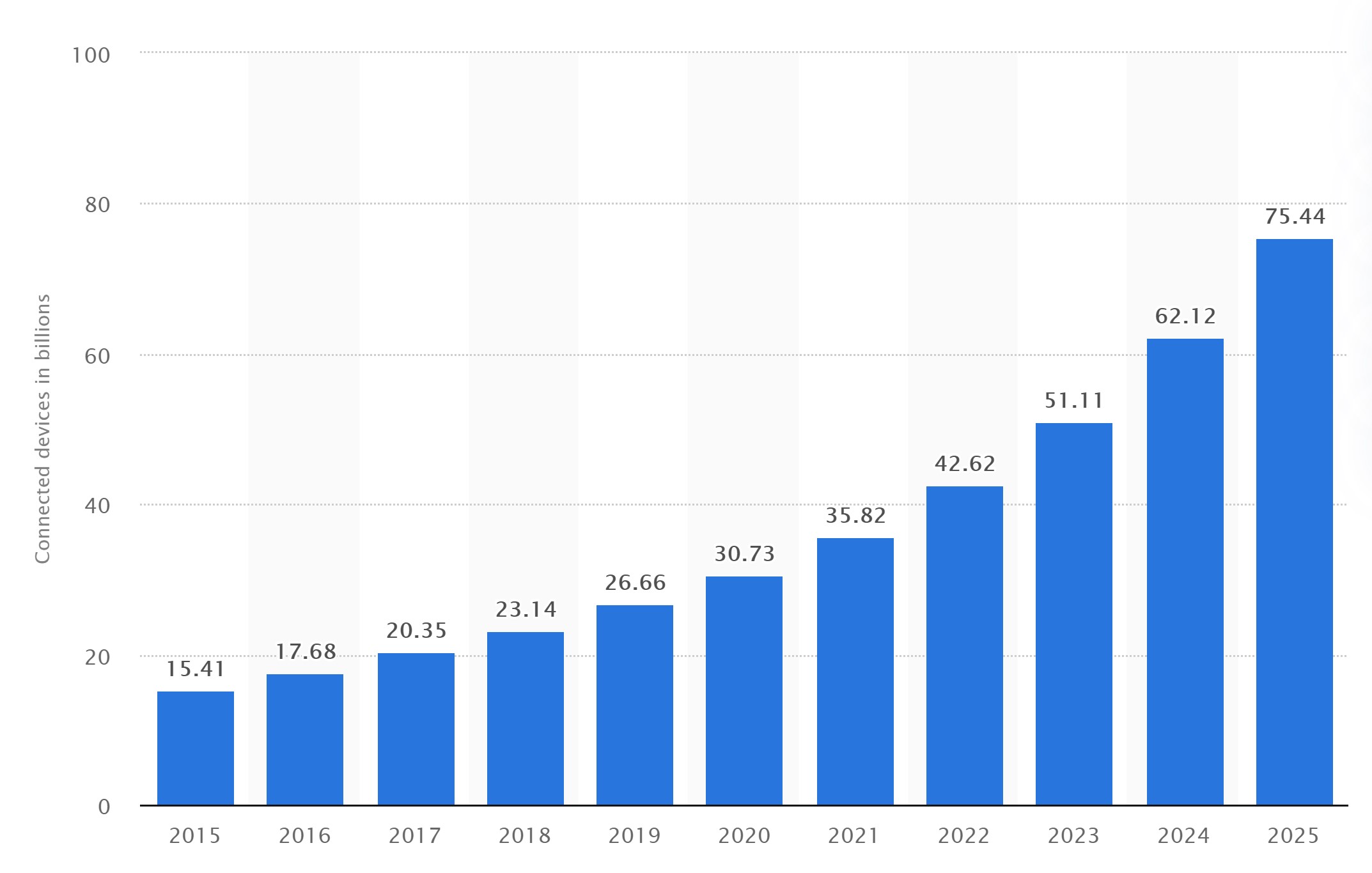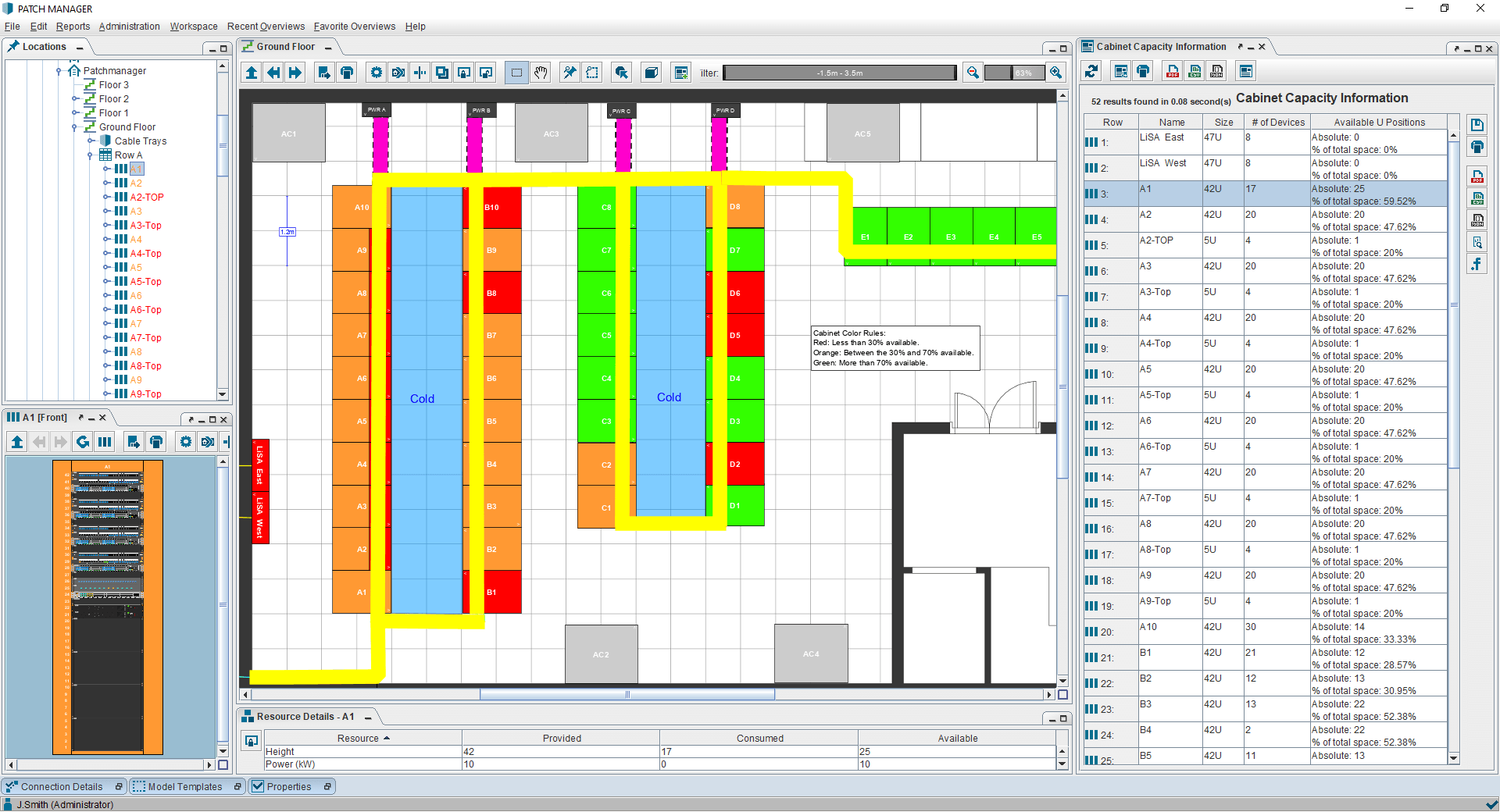
The Internet of Things, or IoT, refers to the billions of physical devices around the world that are now connected to the internet, all collecting and sharing data. In today’s world, more and more things are becoming IoT devices; lightbulbs, cars, cell phones and cameras are just a few simple examples.
The more devices we connect, the more data our data centers must store, process and analyze.
The data center industry faces several challenges due to the rapidly changing landscape of technologies and the dramatic increase of data that these new technologies bring. The challenges include, but are not limited to the Internet of Things (IoT), Artifical Intelligence (AI), Edge Computing and recently, the emerging 5G technology. In this article, we focus on the impact of IoT on data centers and propose the implementation of a Data Center Infrastructure Management (DCIM) solution as a mechanism to help address the challenges.
What is the Internet of Things?
The Internet of Things, or IoT, refers to the billions of physical devices around the world that are now connected to the internet, all collecting and sharing data. In today’s world, more and more things are becoming IoT devices; lightbulbs, cars, cell phones and cameras are just a few simple examples. Some facts about the rise of IoT; by the end of 2020, it is estimated that there will be more than 31 billion IoT devices connected to the internet. Based on the predictions of statista.com and idc.com, this number could, by 2025, rise to anywhere between 41.6 and 75.44 billion devices. In terms of data center resources, this technology comes with a cost. The more devices we connect, the more data our data centers must store, process and analyze.

Image 2: Connected devices (billions) by year – Source: statista.com
The impact of IoT on data centers
A solution to this exponential growth in IoT could be for data centers to increase capacity ‘ad infinitum’ to satisfy demand. However, adding new resources and building new data centers are time-consuming and expensive processes, so consideration should first be given to the question of whether the current resources available to a data center are being utilized efficiently. For example, the average Power Usage Effectiveness (PUE) ratio for a data center in 2020 is 1.58, only marginally better than 7 years ago, according to the latest annual Uptime Institute survey. Secondly, if capacity expansion is required, how can this be achieved in the most efficient manner. A crucial aspect in the decision-making process for both questions, is being able to have detailed insight into the physical layer assets and connectivity of the data center. In a nutshell, being able to know exactly which assets you have, where they are located, how they are interconnected and what resources they consume.
A solution for increasing data center operations efficiency
A DCIM solution provides a framework for both the effective management of current resources, and for planning future changes. By using the DCIM solution to document and manage their existing infrastructure, data center professionals can make more effective decisions regarding the usage of their data centers, resulting in reduced costs and an infrastructure that is easier to sustain and expand.
For future growth, consider a case where planning needs to be made to determine how many new racks, servers and network devices are needed, along with the type and length of cabling that is required to connect the new assets. While in theory, this could be planned manually or based on custom calculations and excel files, with a dedicated tool, these plans will be easier to create, more accurate, and will provide a means for reporting and auditing. In possession of this insight, organizations can far more simply optimize the projected costs of the expansion.
How can PATCH MANAGER help?
PATCH MANAGER is a unique, best-of-breed software solution planning, managing, and maintaining all aspects of the physical layer in a data center infrastructure. This state-of-the-art product offers data center professionals detailed insight into every asset and cable.
PATCH MANAGER provides you with:
- 2D and 3D visualization, so you can see your entire infrastructure as it is
- Powerful reporting capabilities, so you can get a full picture of available resources
- A complete work order system, so you can plan your changes and infrastructure growth down to the last cable with ease
- Powerful integration capabilities via a comprehensive REST API
- Flexible user access, so your team can work effectively
- And much more…
Image 3: PATCH MANAGER reporting: Cabinet Capacity Information
If you would like to request a personal online demo with one of our consultants, click here.
IoT has also impacted modern office networks. If you are further interested in how PATCH MANAGER can help you make the management of your office building network more efficient, read our previous article, which focuses on this topic.
Download the printable version of this article here:
